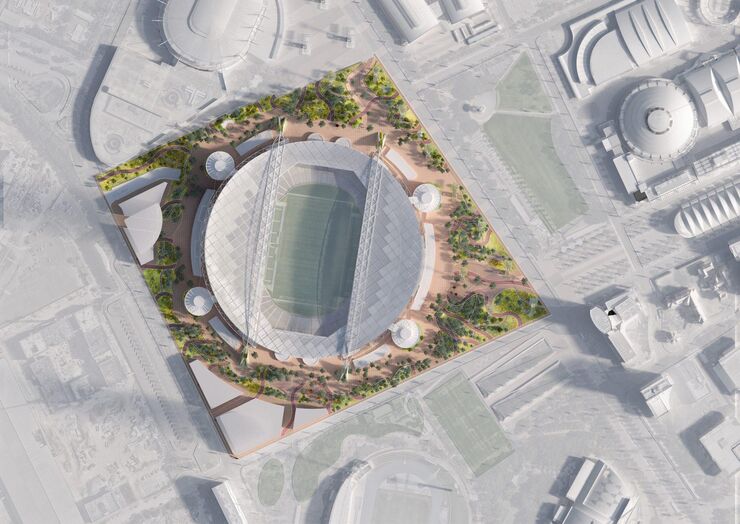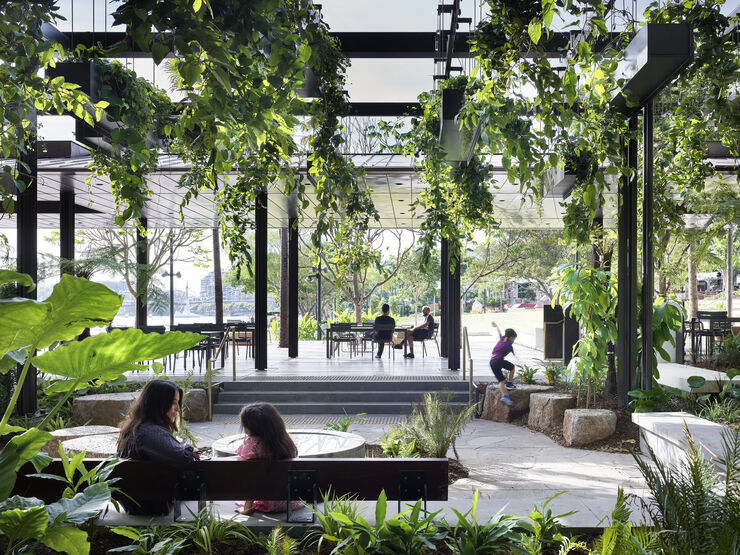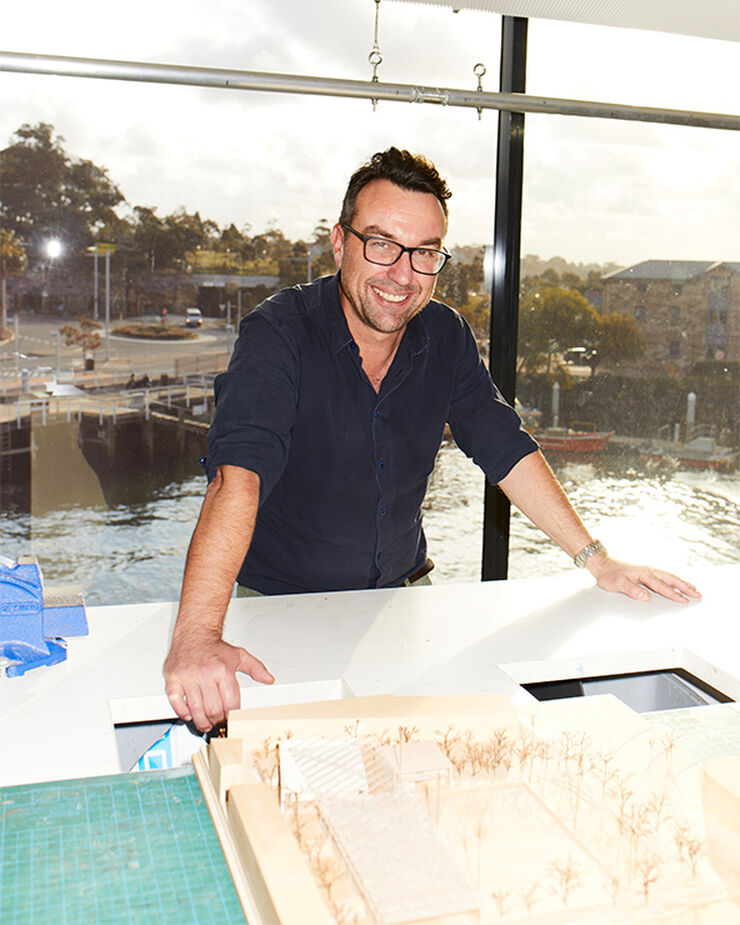A new health régime for sporting spaces
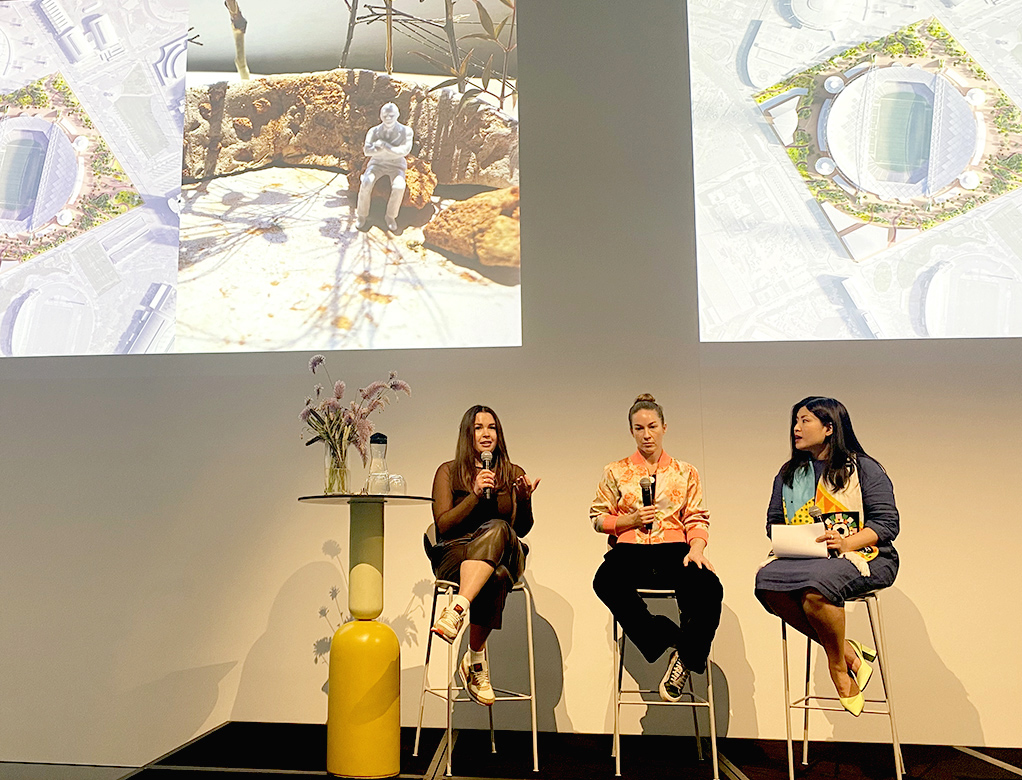
Australia’s sporting culture is nothing short of abundant.
Advanced resources, high-performance technologies and seemingly unlimited sporting options all help to lift our game, but are these essential community spaces as dynamic as they could be?
Could we be using these spaces as tools for regeneration and biodiversity as well?
Senior Associate Georgia Darling tackled this topic during 2023’s South by South-West Festival on Gadigal Country, Sydney, alongside resilient cities strategist Jess Miller and Head of Sustainability (AU and NZ) for the FIFA Women’s World Cup, Sheila Nguyen.
Together, they reimagined these places and spaces to be more inclusive, biodiverse, and regenerative. Inspired by Hassell’s shortlisted competition scheme for Stadia Precinct in Sydney, a precinct that formed the heart of the 2000 Olympic and Paralympic Games. The panel encouraged the audience to look at a variety of sporting scenarios with fresh eyes, as places that can deliver new opportunities for water harvesting, biodiversity, habitats, and connection to culture.
Their insights change how communities view their ‘village green’.
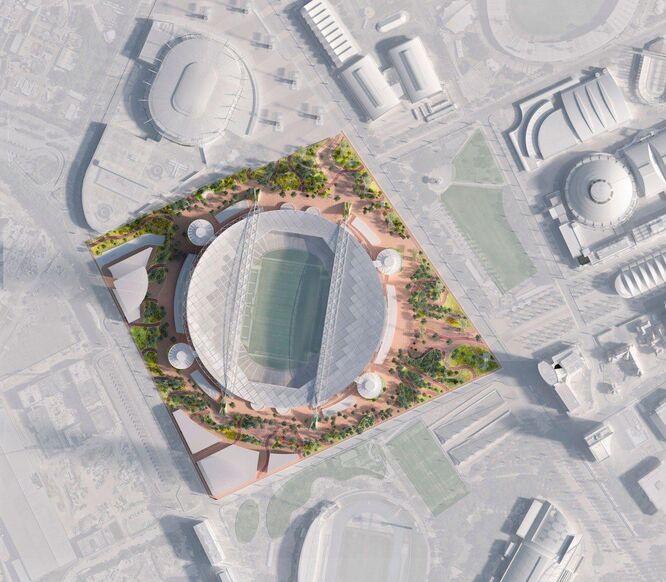
on the traditional lands of the Wangal people.
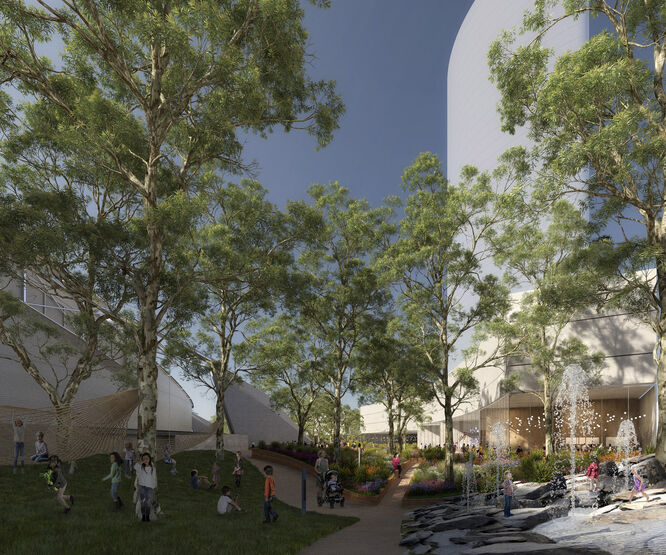
GREENER CRICKET GROUNDS AND HEALTHIER SPACES
The panel started by focusing on cricket, a much loved sport in Australia, and the grounds it’s played on. These fields are usually vast, manicured expanses of a single grass species, which can be expensive to maintain and require constant re-laying. They also serve as football pitches in the winter, leading to the use of pesticides, frequent watering, and extensive assessments.
However, these environments are disastrous for insects. A single grass species and its chemical maintenance create a habitat akin to a barren wasteland, lacking the diversity of food and shelter necessary for a thriving community of flying insects.
But there’s a better way.
Instead of endlessly pursuing perfect, emerald lawns, the panel discussed the possibility of replacing them with native plant species. Native plants would be more resilient, reducing the need for pesticides that can contaminate water tables and harm both above- and below-ground creatures.
The areas surrounding these playing fields are typically open and exposed, making them ideal for planting to provide habitats for wildlife and shade for spectators.
Sites of this size also offer opportunities for enhanced water harvesting, collection, and reuse, whether it’s from rainfall, on-site sources, or wastewater from nearby buildings. This could be an additional means of keeping the grounds adequately watered.
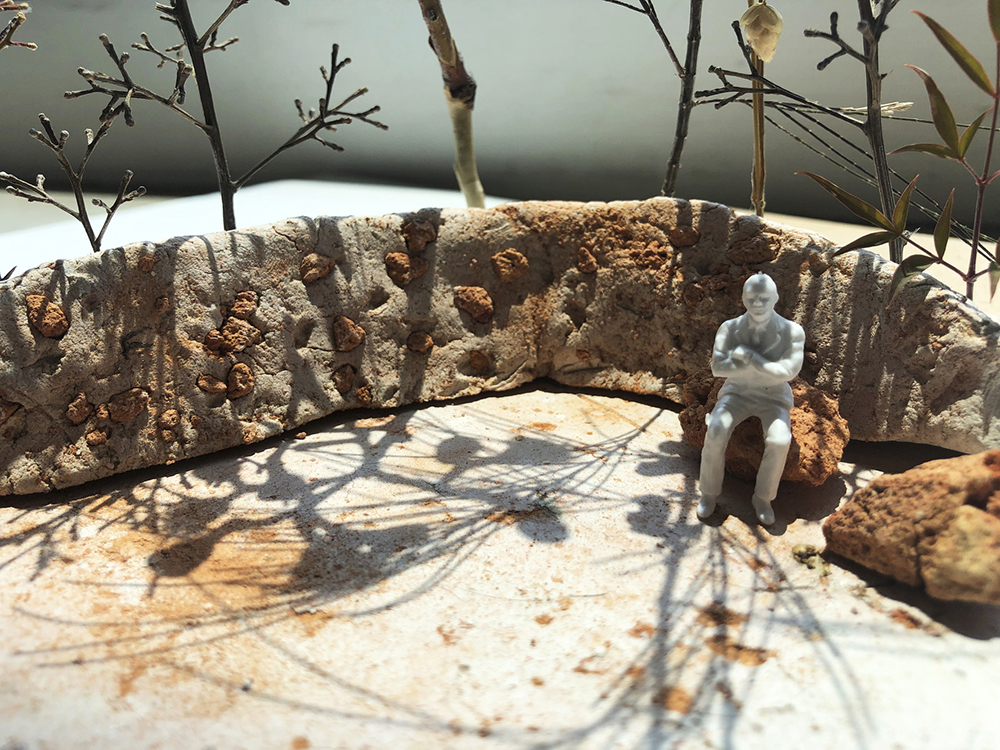
from a place of humility, reverence and connection, continuing a 60,000 year-old legacy of environmental stewardship.
ALTERNATIVE IDEAS FOR GOLF COURSES
Golf courses can become ideal habitats for native flora if they’re revegetated with native plant communities or used as seed banks. Their open, undeveloped expanses naturally create corridors for wildlife, all while embracing a custodian/care approach through public access, rather than exclusive membership.
Getting the local community involved in co-design and co-caring fosters a strong sense of belonging and responsibility, as everyone joins forces to nurture the space.
Furthermore, it’s worth mentioning that golf courses are often situated in flood-prone areas, which is why they’ve remained undeveloped. This makes them naturally cool and valuable spaces.
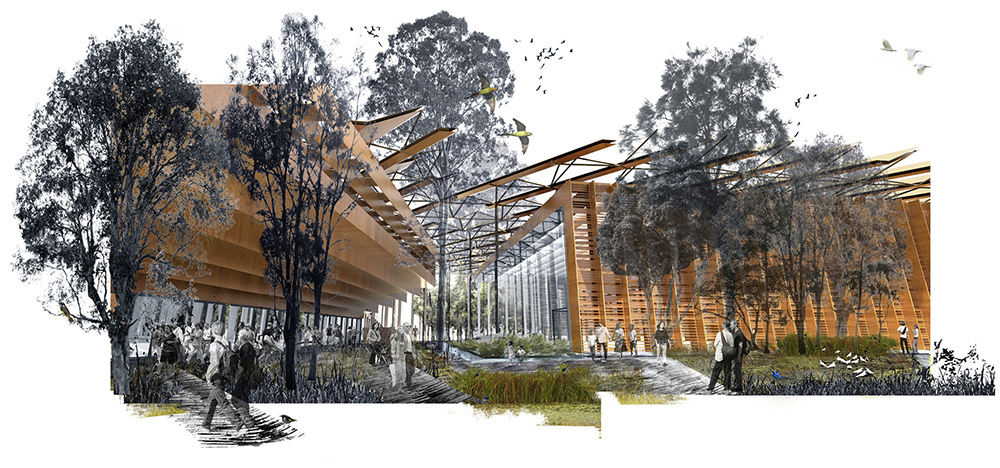
Our vision was for a park place where sport and ecology mix seamlessly, support and complement one another in a balanced environment.
FIELDS OF DREAMS
The areas surrounding basketball courts are also opportunities for creating habitats. Typically hard-edged, neglected, or brightly lit for safety – they could instead be attractive homes for wildlife if approached slightly differently.
By introducing trees, shrubs and ground cover, these places would soon attract birds, insects and below-surface creatures. This planting would improve shading, helping to keep courts cooler and players more comfortable.
A common complaint from neighbours living close to basketball courts is the noise. Again, trees, foliage and soil are good insulators of sound so surrounding a corner with green walls and trees can help turn down the volume.
Simple measures would connect the edges of buildings near the courts to a diversity of life, creating opportunities for habitat havens, food sources and connection, not to mention improving air quality in urban environments.
INTEGRATED BIO-HYDROTHERAPY
Our local swimming facilities can be more than just places to swim, splash and play. The panel explored the idea of using the indoor and outdoor spaces that accompany these civic spots as places that can create and support biodiversity.
Many of these facilities have the potential to serve as rain gardens and wetland-like areas. By collecting and storing water in innovative ways, such as gathering runoff from nearby buildings and creating wetlands in public spaces, we can not only attract wildlife but also enhance the appeal of the local area.
This approach could help communities connect with and appreciate water, fostering a sense of responsibility for the hydrological system and the marine life it supports.
We’re living through a tension between systems.
Modern sports grounds are a mostly western ideal and have involved into way of “representing” an idealised environment requiring very high levels of maintenance.
They’re ‘green space’ reserves scattered in our cities and towns that started as informal community meeting spaces that evolved into formalised high maintenance sports grounds over time that actually ended up excluding people. It’s an opportune time to shift away from the concept of ‘maintenance’, to embrace the idea of ‘care’ - moving away from mowers to just letting it grow.
Sport at its core is all about relationship building. It’s an important part of our urban systems, as it creates and enhances connections between people – but it could do so much more. Sporting grounds and precincts can become the focus of connections between creatures, people and the environment – re-embracing their original use as informal places of meeting in the broadest sense.
From biodiversity to urban environments, we need to recreate sports spaces to rise to the challenges ahead.

扫描二维码关注Hassell微信公众号
